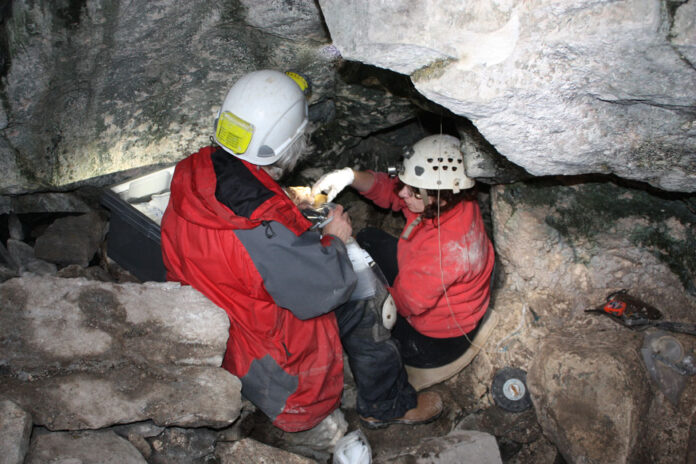Investigations into the skeletal remains of a teenage boy discovered in a cave outside Ballyvaughan five years ago have shed new light on the life and death.
A human skull discovered by cavers in the Burren in 2011 prompted a rescue archaeological excavation funded by the National Monuments Service of the Department of Arts, Heritage, Regional, Rural and Gaeltacht Affairs. The full scientific investigations of the skeleton have just been published revealing incredible details about the youth, who died in the 16th or 17th century.
At the time of excavation, the small size of the skeleton led the team to think it was of a child. However, subsequent analysis of the teeth in particular revealed the remains belonged to someone who had died aged 14 to 16 years old. There was evidence of stunted growth, almost certainly a result of malnutrition and hunger. The adolescent measured 4 ft. 1 inch in height – the equivalent of an average eight year old child by modern standards, or an 11-12 year old by post-medieval standards. The stunted growth also meant that the sex of the individual could not be determined by normal archaeological methods.
Tooth samples were sent to two different laboratories for ancient DNA analysis and both confirmed the individual was a teenage boy. The DNA laboratories were at the University of Surrey in England and the Max Planck Institute for the Science of Human History in Germany.
Radiocarbon dating in Queen’s University Belfast revealed the teenager had died sometime between 1520 and 1670.
Clare historian Dr Ciarán Ó Murchadha has suggested that the most likely timeframe for the boy’s death is during the Commonwealth period (1649-1660), when Clare endured nearly two decades of famine, warfare, disease, and mass human casualty.
A native of Ennis, Colin McGann has been editor of The Clare Champion since August 2020. Former editor of The Clare People, he is a journalism and communications graduate of Dublin Institute of Technology.


